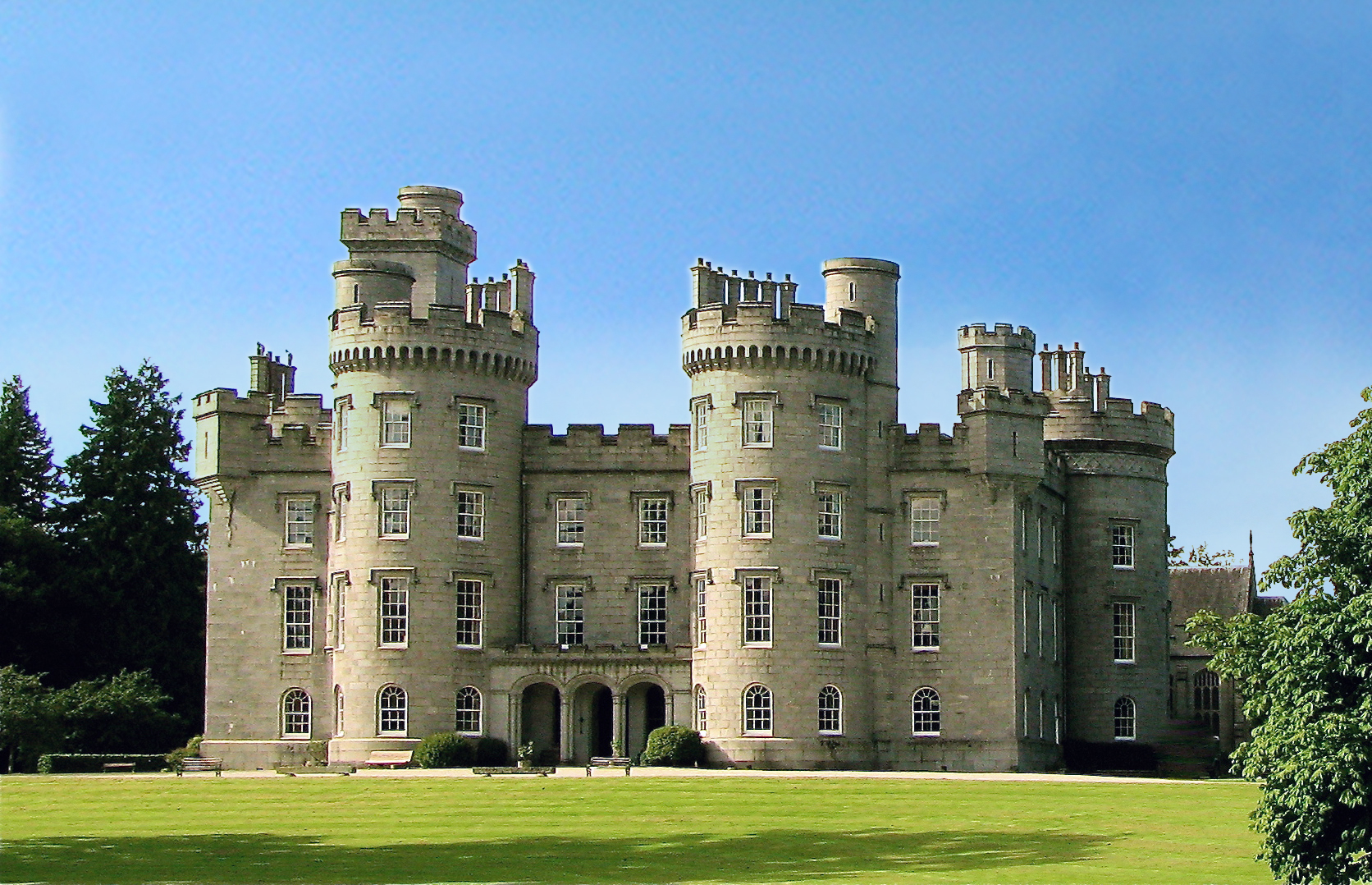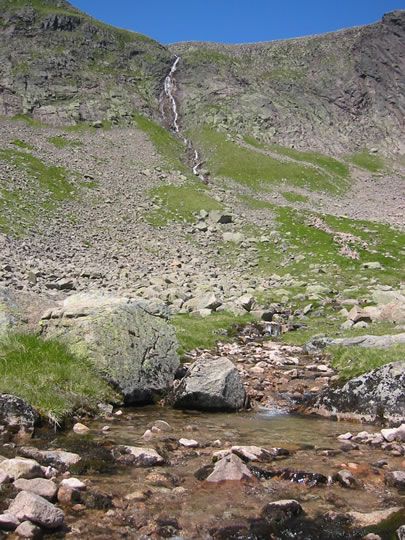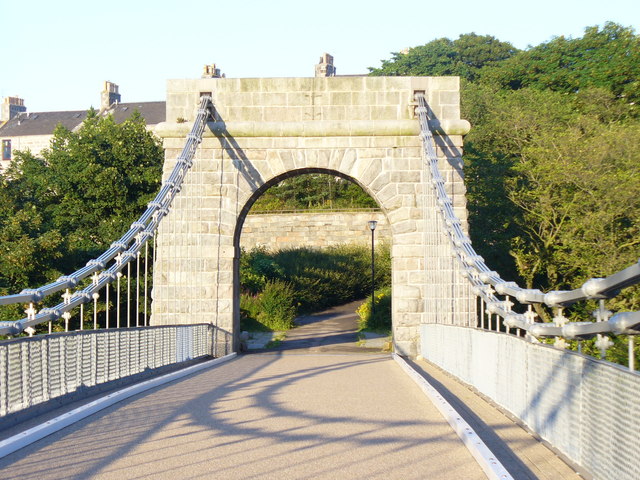|
John Smith (architect)
John Smith (1781 – 22 July 1852) was a Scottish architect. His career started in 1805 and he was appointed as the official city architect of Aberdeen in 1807, the first person to hold this post. Together with Archibald Simpson, he contributed significantly to the architecture of Aberdeen, and many of the granite buildings that gave the city the nickname 'The Granite City' or also 'The Silver City' are attributed to them. Smith was the son of a successful builder and architect and his own son, William, continued the family tradition by also becoming an architect. After completing his training in London, Smith quickly became established throughout the north-east of Scotland. He secured private commissions to design, renovate or alter numerous country houses, parish churches and castles; his official capacity as City Architect ensured he is also credited with several extensive public works. Towards the middle of his career around the 1830s, as his individuality developed, ... [...More Info...] [...Related Items...] OR: [Wikipedia] [Google] [Baidu] |
Balmoral Castle
Balmoral Castle () is a large estate house in Aberdeenshire, Scotland, and a residence of the British royal family. It is near the village of Crathie, west of Ballater and west of Aberdeen. The estate and its original castle were bought from the Farquharson family in 1852 by Prince Albert, the husband of Queen Victoria. Soon afterwards the house was found to be too small and the current Balmoral Castle was commissioned. The architect was William Smith of Aberdeen, and his designs were amended by Prince Albert. Balmoral remains the private property of the monarch and is not part of the Crown Estate. It was the summer residence of Queen Elizabeth II, who died there on 8 September 2022. The castle is an example of Scottish baronial architecture, and is classified by Historic Environment Scotland as a category A listed building. The new castle was completed in 1856 and the old castle demolished shortly thereafter. The Balmoral Estate has been added to by successiv ... [...More Info...] [...Related Items...] OR: [Wikipedia] [Google] [Baidu] |
Cluny Castle
Cluny Castle was originally built c.1604 as a Z-plan castle replacing either a house or small peel tower. Sited in the parish of Cluny, it is south of Monymusk and north of Sauchen in Aberdeenshire, north-east Scotland. Owned by three separate branches of Gordon families over the centuries, it was used to shelter Jacobite rebels in the mid-18th century. Extensive additions were made in 1820 to the design of architect John Smith when it was in the ownership of Colonel John Gordon. Two wings of the castle and the adjoining private chapel were destroyed by fire in 1926, but the damage was restored. It is a Category A listed building and has been used as a film setting. The grounds are included on the Inventory of Gardens and Designed Landscapes in Scotland. it remains privately owned by the Baron of Cluny who has employed craftsmen to complete extensive renovations. It is not open to the public but corporate events are hosted there and weddings are held in the chapel. History O ... [...More Info...] [...Related Items...] OR: [Wikipedia] [Google] [Baidu] |
Brucklay Castle
Brucklay Castle, also known as Brucklay House, is a 16th-century castle in the Buchan area of Aberdeenshire, Scotland. The earliest part of the castle was erected by James Crawford of Brucklay in 1600–1625, possibly incorporating elements of a 16th-century building. It was granted by the Clan Irvine to Arthur Dingwall in 1742 when he married into their family. The building was extended in 1765, and again in 1814, by architect John Smith, A major reconstruction took place in 1849, designed by Thomas Mackenzie for Captain Alexander Dingwall-Fordyce. Further additions were made in 1881, probably by architect James Matthews, who was in partnership with Alexander Marshall Mackenzie, son of Thomas. During World War II, prisoners of war were housed in huts on the castle grounds. In 1952 the building was sold to the housebreaker, Charles Brand of Dundee Ltd. Its contents and some architectural features were sold off shortly afterwards, and the roof removed. By the 1990s it was a ruin ... [...More Info...] [...Related Items...] OR: [Wikipedia] [Google] [Baidu] |
Craigievar Castle Cloudy
Craigievar Castle is a pinkish harled castle or fortified country house south of Alford, Aberdeenshire, Scotland. It was the seat of Clan Sempill and the Forbes family resided here for 350 years until 1963, when the property was given to the National Trust for Scotland by William Forbes-Sempill, 19th Lord Sempill, in the 1960s. The setting is among scenic rolling foothills of the Grampian Mountains, and the contrast of its massive lower storey structure to the finely sculpted multiple turrets, gargoyles and high corbelling work to create a classic fairytale appearance. History An excellent example of the original Scottish Baronial architecture, the great seven-storey castle was completed in 1626 by the Aberdonian merchant William Forbes, ancestor of the Forbes baronets of Craigievar and brother of the Bishop of Aberdeen, Patrick Forbes of Corse Castle. Forbes purchased the partially completed structure from the impoverished Mortimer family in the year 1610. He arr ... [...More Info...] [...Related Items...] OR: [Wikipedia] [Google] [Baidu] |
Shakkin' Briggie
St. Devenick's Bridge (locally known as the Shakkin' Briggie, or as Morison's Bridge) is a disused suspension footbridge which crosses the River Dee from Ardoe to Cults near Aberdeen in Scotland. History The foundation stone was placed on 27 August 1836, and the bridge was opened in 1837 (1840 according to Robertson). It was funded by Rev. Dr. George Morison (1758–1845), at a cost of £1,400. Morison, son of Aberdeen Provost Robert Morison, was the minister at Banchory-Devenick Parish Church from 1785, and inherited his elder brother Thomas' estate. He carried out work on behalf of his parishioners including arranging distribution of vaccines, supply of food during the 1800 famine, setting up a savings bank, and building a school. Morison proposed the bridge to link his church on the south bank of the Dee to 700 parishioners resident on the north bank, who were at the time crossing to the church by boat every Sunday. The bridge was designed by Aberdeen's City Architect ... [...More Info...] [...Related Items...] OR: [Wikipedia] [Google] [Baidu] |
Bridge Of Dee
The Bridge of Dee or Brig o Dee ( gd, Drochaid Dhè) is a road bridge over the River Dee in Aberdeen, Scotland. The term is also used for the surrounding area of the city. Dating from 1527,Richards, J.M., ''The National Trust Book of Bridges'', Jonathan Cape, 1984, the bridge crosses at what was once the City of Aberdeen's southern boundary. The Bridge of Dee is approximately 32 feet (10 m) above typical water height and consists of seven nearly semicircular ribbed arches, built using granite and Elgin sandstone. Today the bridge carries the main A92 road into Aberdeen from the south. It was designated a Category A listed structure in 1967, and was also listed as a Scheduled monument until being de-scheduled on 16 February 2009. George Gordon, 6th Earl of Huntly with his Catholic supporters rebelled against James VI of Scotland and confronted the King at the Brig of Dee on 17 April 1589. There was no battle and Huntly surrendered a few day later. The bridge was the site o ... [...More Info...] [...Related Items...] OR: [Wikipedia] [Google] [Baidu] |
Toll House
A tollhouse or toll house is a building with accommodation for a toll collector, beside a tollgate on a toll road, canal, or toll bridge A toll bridge is a bridge where a monetary charge (or '' toll'') is required to pass over. Generally the private or public owner, builder and maintainer of the bridge uses the toll to recoup their investment, in much the same way as a toll road .... History Many tollhouses were built by turnpike trusts in England, Wales and Scotland during the 18th and early 19th centuries. Those built in the early 19th century often had a distinctive bay front to give the pikeman a clear view of the road and to provide a display area for the tollboard. In 1840, according to the Turnpike Returns in Parliamentary Papers, there were over 5,000 tollhouses operating in England. These were sold off in the 1880s when the turnpikes were closed. Many were demolished but several hundred have survived for residential or other use, with distinctive features of the ... [...More Info...] [...Related Items...] OR: [Wikipedia] [Google] [Baidu] |
River Dee, Aberdeenshire
The River Dee ( gd, Uisge Dhè) is a river in Aberdeenshire, Scotland. It rises in the Cairngorms and flows through southern Aberdeenshire to reach the North Sea at Aberdeen. The area it passes through is known as Deeside, or Royal Deeside in the region between Braemar and Banchory because Queen Victoria came for a visit there in 1848 and greatly enjoyed herself. She and her husband, Prince Albert, built Balmoral Castle there which replaced an older castle. Deeside is a popular area for tourists, due to the combination of scenic beauty and historic and royal associations. It is part of the Cairngorms National Park, and the Deeside and Lochnagar National Scenic Area. The Dee is popular with anglers and is one of the most famous salmon fishing rivers in the world. The New Statistical Account of Scotland attributed the name Dee as having been used as early as the second century AD in the work of the Alexandrian geographer Claudius Ptolemy, as ''Δηοῦα'' (=Deva), meaning 'g ... [...More Info...] [...Related Items...] OR: [Wikipedia] [Google] [Baidu] |
Wellington Suspension Bridge
The Wellington Suspension Bridge (also known as the Chain Bridge and Craiglug Bridge) is a suspension bridge crossing the River Dee from Ferryhill to Craiglug in Aberdeen, north east Scotland. Designed by Captain Samuel Brown and the Aberdeen City Architect John Smith, it was opened to pedestrians in November 1830 and to traffic in May 1831. The chain bridge was closed in 1984 to vehicles and then pedestrians in 2002, but was restored in 2006/07 and pedestrian use was re-instated in 2008. History Aberdeen was undergoing rapid expansion in the early 19th century and landowners in Torry, the Menzies family of Pitfodels, wished to capitalise on the opportunities arising from the establishment of the turnpike road between Aberdeen and Stonehaven in 1799. A series of legal disputes as to exact ownership of the lands ended in arbitration. An Act of Parliament was eventually obtained by the Heritors of Nigg and the Road Trustees in 1828 for a bridge to replace the Craiglug Ferr ... [...More Info...] [...Related Items...] OR: [Wikipedia] [Google] [Baidu] |
Samuel Brown (Royal Navy Officer)
Captain Sir Samuel Brown of Netherbyres KH FRSE (1776 – 13 March 1852) was an early pioneer of chain design and manufacture and of suspension bridge design and construction. He is best known for the Union Bridge of 1820, the first vehicular suspension bridge in Britain. Naval career Brown was born in London, the son of William Brown of Borland, Galloway, Scotland. He joined the Royal Navy in 1795, serving initially on the Newfoundland and North Sea stations. He served as lieutenant on (1803) and in 1805 joined as first lieutenant. During his service on ''Phoenix'' he took part in the capture of the French frigate . The following year he was appointed to , followed by periods of service aboard and .Obituary, ''The Gentleman's Magazine'' 1852, pp. 519–520. During his service, he carried out tests on wrought iron chain cables, using them as rigging for in 1806 on a voyage to the West Indies. This so impressed the Admiralty that on his return in 1808 it immediately ordered ... [...More Info...] [...Related Items...] OR: [Wikipedia] [Google] [Baidu] |
Torry Bank, Wellington Suspension Bridge - Geograph
Torry is an area within the city of Aberdeen, Scotland. Torry’s origins People have been living in Torry since at least the 12th century. The place name first appears in written records in 1484 and was erected a Burgh of barony by Royal Charter from King James IV in 1495. The first bridge over the Dee linking Torry with Aberdeen was built in the 1520s and Torry’s first pub, ‘le Sandy Velle’, is recorded in 1535, serving travellers from Aberdeen. Over time development in the area became focussed what became known as ‘Old Torry’, a fishing community on the south bank of the River Dee, to the north of present day Sinclair Road. In 1842 the Harbour authorities built two 'leading lights' in Old Torry to guide ships safely into Aberdeen Harbour. They are still working today. Some of Old Torry’s oldest houses were lost when the River Dee was diverted to enable the first major expansion of Aberdeen Harbour in 1871, a development which enabled the construction of th ... [...More Info...] [...Related Items...] OR: [Wikipedia] [Google] [Baidu] |







.jpg)
